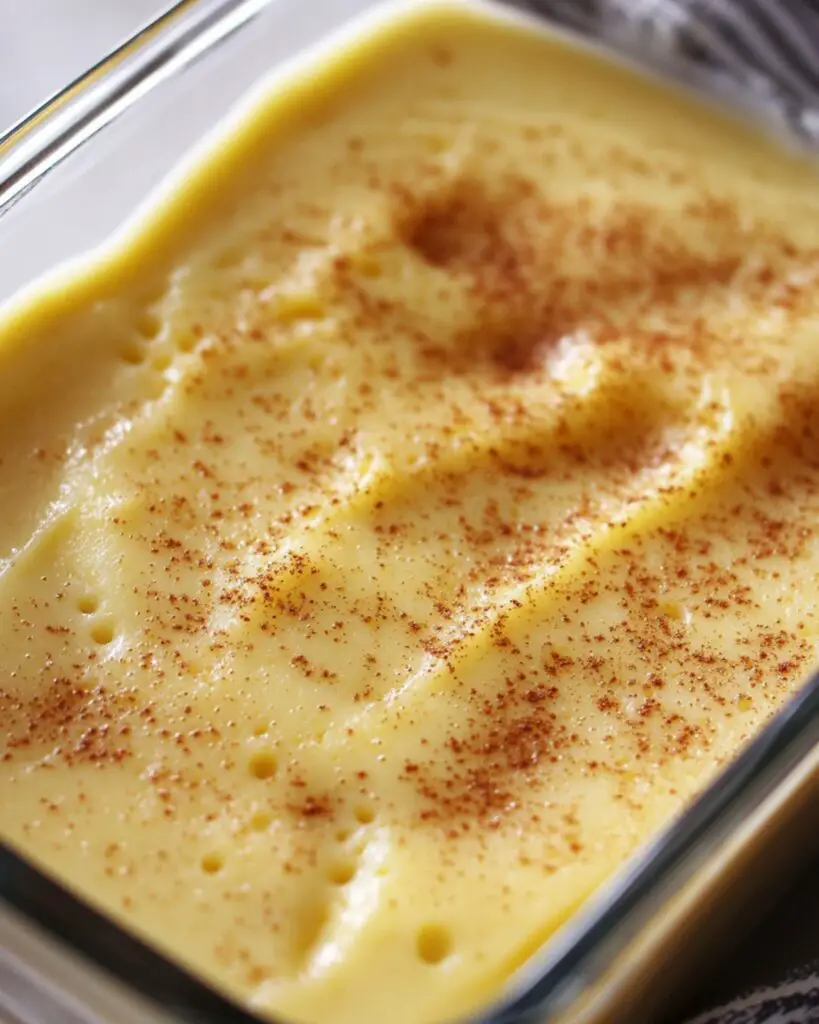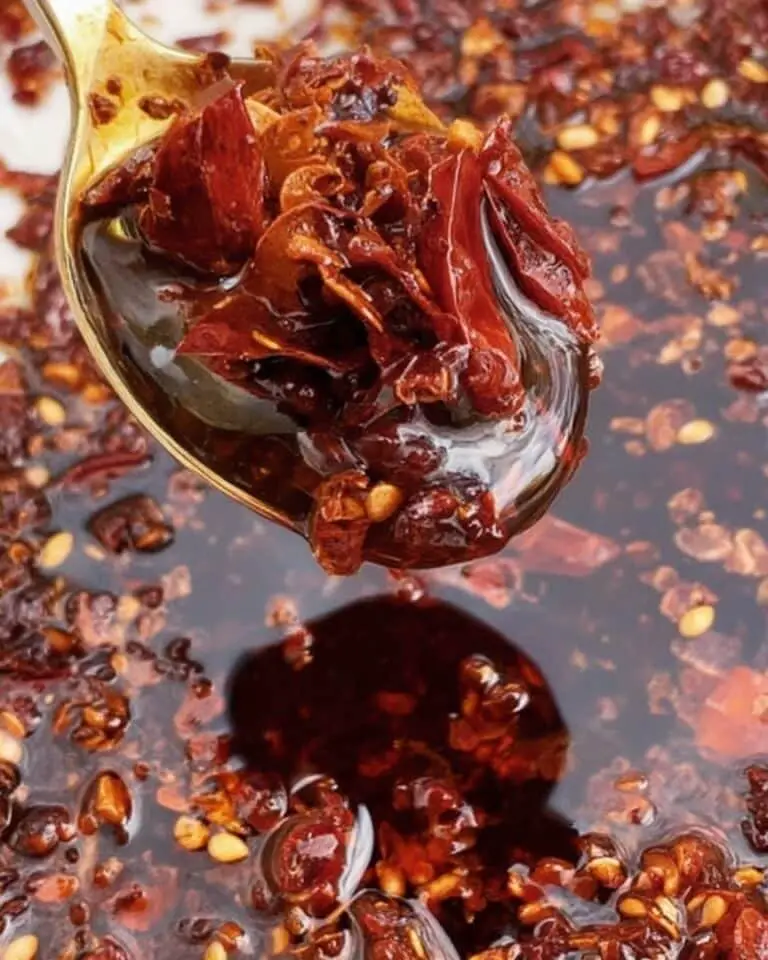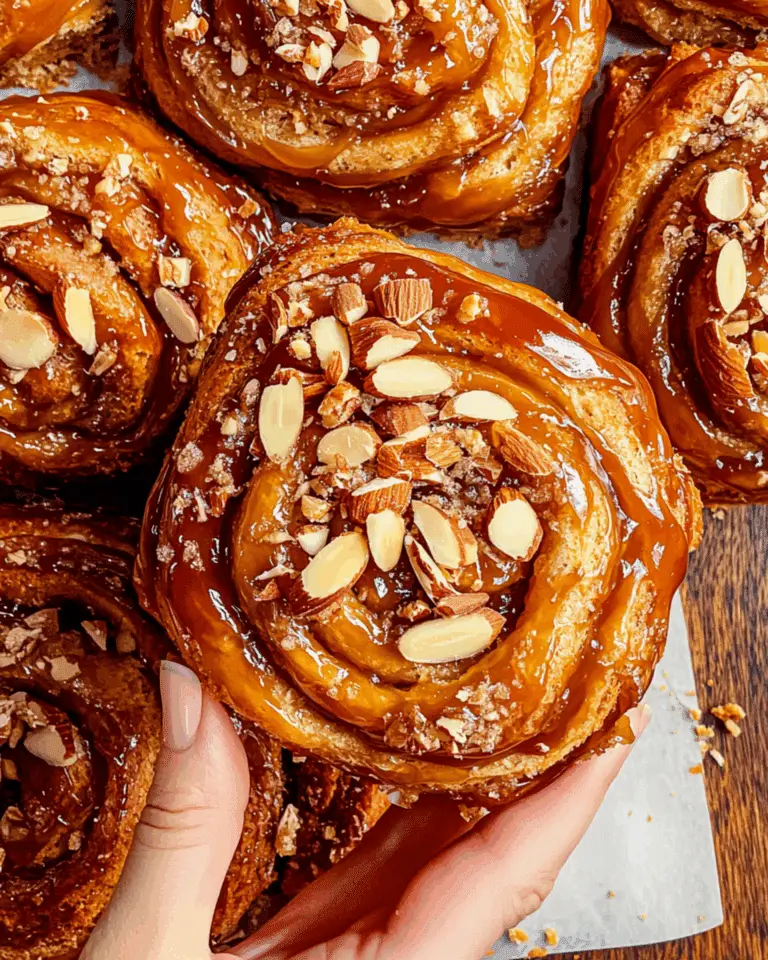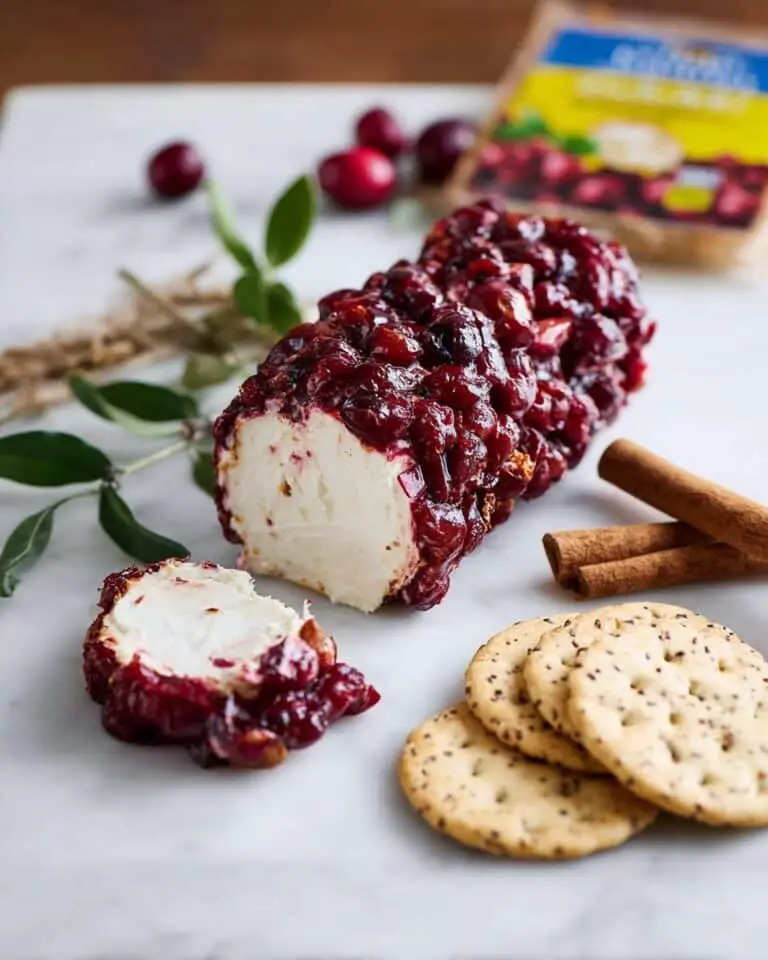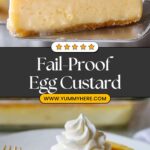This velvety smooth Fail-Proof Egg Custard is the ultimate comfort dessert that strikes the perfect balance between simplicity and elegance. With just five basic ingredients and straightforward preparation, you’ll create a silky, delicate custard that’s gently perfumed with vanilla and a hint of nutmeg. It’s the dessert I turn to when I want something impressive without spending hours in the kitchen!
Why You’ll Love This Recipe
- Truly Fail-Proof: This recipe uses a gentle baking method that prevents curdling, making it perfect even for first-time custard makers.
- Simple Ingredients: You likely have everything you need in your pantry right now – eggs, milk, sugar, and vanilla are the backbone of this luxurious dessert.
- Versatile Serving Options: Enjoy it warm from the oven or chilled from the refrigerator, dressed up with toppings or savored in its pure, silky form.
- Make-Ahead Friendly: Perfect for busy schedules, this custard actually improves after a night in the refrigerator as the flavors deepen.
Ingredients You’ll Need
- Eggs: The foundation of our custard, providing structure and that characteristic silky richness. Fresh eggs work best here.
- Sugar: Balances the eggy flavor with just the right amount of sweetness. The small amount used allows the custard’s natural flavors to shine.
- Vanilla: Adds that warm, aromatic quality that elevates the entire dessert. Use pure vanilla extract for the best flavor.
- Salt: Just a pinch enhances all the other flavors and balances the sweetness. Don’t skip this crucial ingredient!
- Milk: Choose 2% or whole milk for the creamiest results. The milk fat is essential for that luxurious mouthfeel we’re after.
- Nutmeg: A light dusting on top adds that classic custard finish with a subtle warmth and complexity.
Note: You’ll find the complete list of ingredients, along with their exact measurements, in the printable recipe card at the bottom of this post.
Variations
Want to customize your custard? Here are some delicious ways to make it your own:
- Citrus Infusion: Add a strip of lemon or orange zest to the milk while heating for a bright, aromatic twist.
- Spice It Up: Replace the nutmeg with cinnamon, cardamom, or a blend of warm spices for a different flavor profile.
- Coconut Custard: Substitute coconut milk for half of the dairy milk and add a tablespoon of shredded coconut for tropical flair.
- Maple Custard: Replace the sugar with pure maple syrup for a more complex sweetness (reduce the milk slightly to compensate for the added liquid).
How to Make Fail-Proof Egg Custard
Step 1: Prepare Your Equipment
Preheat your oven to 350°F and lightly grease an 8×8 baking dish. Find a larger baking dish that will comfortably fit your custard dish for the water bath.
Step 2: Create Your Egg Base
In a large bowl, beat together the eggs, sugar, vanilla, and salt until well combined but not overly frothy. The goal is to integrate everything without incorporating too much air.
Step 3: Heat the Milk
Pour the milk into a small saucepan and heat it to about 180°F, just below simmering point. You’ll see steam rising and tiny bubbles forming at the edges, but don’t let it boil – that’s crucial!
Step 4: Temper the Eggs
This is the key step! While whisking constantly, slowly pour a thin stream of the hot milk into the egg mixture. This gradual addition prevents the eggs from scrambling. Keep whisking until all the milk is incorporated, then whisk for one more minute to ensure everything is perfectly smooth.
Step 5: Prepare for Baking
Pour the custard mixture into your prepared baking dish. Sprinkle the top lightly with freshly grated nutmeg. Then place this dish inside the larger dish and carefully add hot water to the outer dish until it reaches about 1 inch up the sides of the custard dish.
Step 6: Bake with Care
Bake for 45-50 minutes. The custard is done when a knife inserted near the center comes out clean, but the custard still jiggles gently when moved. The water bath ensures gentle, even heating that prevents curdling.
Pro Tips for Making the Recipe
- The Jiggle Test: Perfect custard should wiggle like Jell-O when gently shaken – not soupy, but not completely firm either.
- Strain for Silkiness: For an ultra-smooth custard, strain the mixture through a fine-mesh sieve before pouring it into the baking dish.
- Watch Your Temperature: Using an instant-read thermometer to get the milk to exactly 180°F ensures foolproof results every time.
- Easy Water Bath: Fill your kettle and bring it to a boil while you’re preparing the custard. Then you’ll have hot water ready for the water bath without having to carry a wobbly pan of water to the oven.
How to Serve

Egg custard is wonderfully versatile when it comes to serving options:
Simple Elegance
Serve it just as is, either warm from the oven (after cooling slightly) or chilled from the refrigerator. The pure, clean taste of a well-made custard needs no embellishment.
Dressed Up
Top with a dollop of lightly sweetened whipped cream and fresh berries for a more substantial dessert. The contrast between the silky custard and juicy berries is divine.
Seasonal Variations
- Spring: Top with poached rhubarb or strawberries
- Summer: Fresh peaches or blueberries make perfect partners
- Fall: Spice-poached pears or sautéed apples complement the custard’s creamy texture
- Winter: A drizzle of caramel sauce and a sprinkle of sea salt transforms it into a sophisticated treat
Make Ahead and Storage
Storing Leftovers
Custard actually improves with a night in the refrigerator! Cover the cooled custard with plastic wrap, pressing it directly onto the surface to prevent a skin from forming. It will keep beautifully for up to 3 days.
Freezing
While technically possible to freeze custard, I don’t recommend it as the texture can become grainy when thawed. This custard is best enjoyed fresh or within a few days of making.
Reheating
If you prefer warm custard, gently reheat individual portions in the microwave at 50% power in 20-second intervals until just warmed through. Be careful not to overheat or you’ll risk curdling.
FAQs
-
Why did my custard curdle?
Custard typically curdles from overheating. Make sure you’re using a water bath, which regulates the temperature, and remove the custard from the oven as soon as it passes the knife test but still jiggles. Remember that residual heat will continue cooking the custard even after you remove it from the oven.
-
Can I reduce the sugar in this recipe?
Yes, you can reduce the sugar by up to half without affecting the texture. The custard will be less sweet but still set properly. I wouldn’t recommend eliminating it entirely as sugar contributes to the custard’s structure.
-
Why is tempering the eggs so important?
Tempering (slowly adding hot milk to eggs while whisking) prevents the eggs from cooking too quickly and turning into scrambled eggs. This step is crucial for achieving that perfect, smooth texture that defines a great custard.
-
Can I make this custard dairy-free?
Yes! You can substitute the milk with full-fat coconut milk or almond milk. Keep in mind that plant milks will change the flavor profile, and you may need to adjust the baking time slightly as they set differently than dairy milk.
Final Thoughts
This Fail-Proof Egg Custard recipe proves that sometimes the simplest desserts are truly the most special. There’s something almost magical about transforming basic ingredients into such a luxurious treat. Whether you’re serving it for a weeknight family dinner or a special occasion, this custard delivers comfort and elegance in equal measure. Give it a try – I promise it will become one of your go-to desserts for years to come!
Print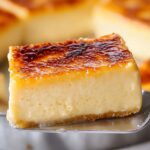
Fail-Proof Egg Custard Recipe
- Prep Time: 15 mins
- Cook Time: 50 mins
- Total Time: 1 hr 5 mins
- Yield: 6 servings
- Category: Desserts
- Method: Baking
- Cuisine: American
- Diet: Vegetarian
Description
This fail-proof egg custard recipe yields a perfectly creamy and silky dessert every time, thanks to a gentle baking method with simple ingredients. Its delicate vanilla flavor and smooth texture make it a classic treat that can be served warm or chilled, topped with nutmeg, whipped cream, or fresh fruit.
Ingredients
Custard Base
- 5 eggs
- 1/2 cup sugar
- 1 1/2 teaspoons vanilla extract
- 1/2 teaspoon salt
- 4 cups 2% or whole milk
Topping
- Nutmeg, for topping
Instructions
- Prepare Oven and Baking Dish: Preheat your oven to 350°F (175°C). Lightly grease an 8×8-inch baking dish to prevent sticking.
- Mix Custard Ingredients: In a large bowl, beat together the eggs, sugar, vanilla extract, and salt until well combined and the mixture is smooth.
- Heat the Milk: In a small saucepan, heat the milk over medium heat until it reaches about 180°F (just before it starts to simmer). Do not allow it to boil.
- Temper the Eggs: Slowly pour a thin stream of the hot milk into the egg mixture while continuously whisking. This ensures the eggs do not scramble. Continue whisking until fully combined, then whisk the mixture for an additional minute for extra smoothness.
- Pour and Add Nutmeg: Pour the custard mixture into the prepared baking dish. Sprinkle nutmeg evenly over the top, if desired.
- Set Up Water Bath: Place the baking dish inside a larger baking dish. Fill the larger dish with hot water until it reaches about 1 inch deep, creating a water bath for gentle baking. Be careful not to splash water into the custard.
- Bake the Custard: Carefully transfer both dishes to the preheated oven. Bake for 45-50 minutes, or until a knife inserted in the center comes out clean. The custard should still have a slight jiggle in the center; do not overbake or the custard may curdle.
- Cool and Serve: Remove from the oven and let cool slightly. Serve warm or chill in the refrigerator. Top with whipped cream, fresh fruit, or additional spices as desired. Refrigerate leftovers promptly.
Notes
- For richer custard, use whole milk rather than 2%.
- To prevent curdling, ensure to gradually add the hot milk while whisking continuously.
- You can add a cinnamon sprinkle on top instead of nutmeg or mix both for extra flavor.
- The water bath (bain-marie) is essential for even baking and preventing the eggs from scrambling.
- Custard can be stored covered in the refrigerator for up to 3 days.
Nutrition
- Serving Size: 1/6 of recipe (about 1/2 cup)
- Calories: 210
- Sugar: 20g
- Sodium: 220mg
- Fat: 8g
- Saturated Fat: 3g
- Unsaturated Fat: 4g
- Trans Fat: 0g
- Carbohydrates: 23g
- Fiber: 0g
- Protein: 9g
- Cholesterol: 185mg


